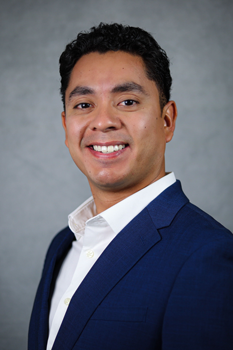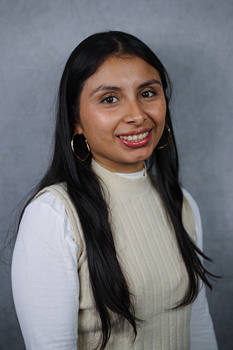Gilmar Flores is a trailblazer. The soft-spoken public health professional sends a message every day when he shows up to work. Gilmar serves as Director of Programs and Research at Breathe Southern California (Breathe SoCal). The message he’s sending: Go for your dreams.
 Gilmar says representation matters. During National Hispanic Heritage Month he is encouraged to see celebration and recognition of Hispanic and Latino culture in the U.S. However, he shares that more can be done to advance health equity.
Gilmar says representation matters. During National Hispanic Heritage Month he is encouraged to see celebration and recognition of Hispanic and Latino culture in the U.S. However, he shares that more can be done to advance health equity.
“When I was growing up, I didn’t see people who looked like me in public health leadership roles,” Gilmar said. “I want to reach the community with my work. I also want Hispanic kids to see me and know they can be leaders.”
Breathe SoCal has been around since 1903 and has consistently been focused on issues related to lung health, including asthma. The organization is a partner in the Health Equity Advancement and Leadership (HEAL) initiative of the Asthma and Allergy Foundation of America (AAFA).
Working to Improve Asthma Outcomes
Gilmar’s work at Breathe SoCal includes a focus on improving asthma outcomes. Black, Hispanic, and American Indian/Alaska natives in America are more likely to have asthma and more likely to have hospital stays or die as a result of asthma. Puerto Ricans have the highest rate of asthma compared to any other racial or ethnic group in the U.S. The HEAL initiative works with Breathe SoCal’s Breathe Easier Asthma Management (BEAM) program to help improve asthma health outcomes and reduce hospital visits due to asthma.
 Gilmar is not alone in the work of improving asthma outcomes. Breathe SoCal health educator Leidi Reyes also plays a key role. Leidi is just getting started in the work of public health. She says the opportunity to make a difference in her community inspires her.
Gilmar is not alone in the work of improving asthma outcomes. Breathe SoCal health educator Leidi Reyes also plays a key role. Leidi is just getting started in the work of public health. She says the opportunity to make a difference in her community inspires her.
“The bottom line is people need more information,” Leidi said. “Programs like BEAM help reach a community that is more likely to be uninsured and less likely to have access to health care.”
Both Gilmar and Leidi say the language barrier remains a factor in asthma outcomes. And even with an asthma diagnosis, medicines may not be covered by insurance or individuals may lack health insurance.
Gilmar’s Career in Public Health
Gilmar got his start in public health as an AmeriCorps worker in an L.A. County community clinic. There, he saw a tremendous community need around health care – especially among people who don’t have health insurance or are undocumented.
Following his early service work, Gilmar worked at Cedars Sinai, then became a chronic obstructive pulmonary disease (COPD) health educator at Breathe SoCal, then moved up to program manager, and now serves in senior leadership as a director.
Gilmar says he plans to continue his education by getting a Ph.D. His goal is to become the CEO of an asthma-focused public health organization.
“I want to be an example, to show a path so others like me can see an opportunity they may not have seen before.”
How Can You Help Reduce Asthma and Allergy Disparities?
The only way we can reduce health disparities is if we all work together. Everyone – from people with asthma and allergies to policymakers and the health care industry – can be a part of building programs that make a lasting difference for people, families, and communities impacted by asthma and allergies.
Sign up for AAFA’s community to stay up to date about the following opportunities to get involved:
- Advocate for people affected by asthma disparities
- Participate in patient-centered research and clinical trials
You can also donate to support AAFA’s mission to create real and lasting change.



Comments (0)